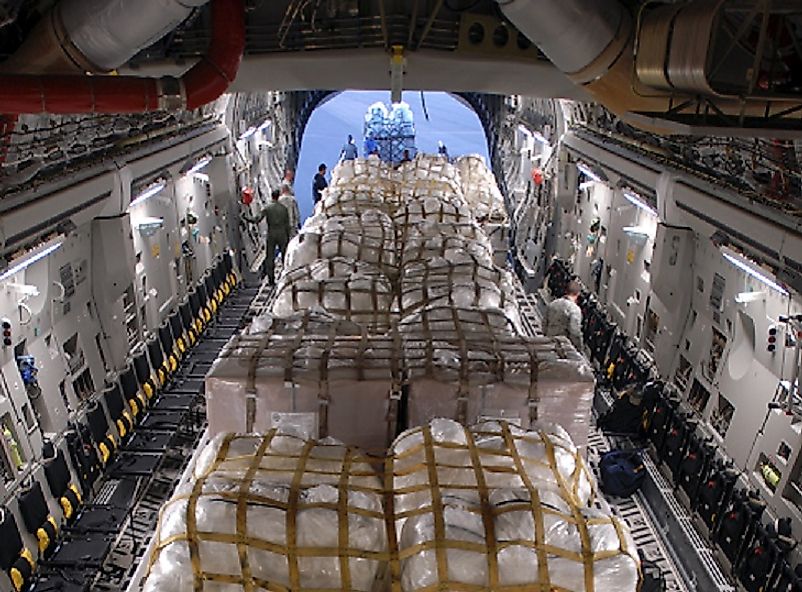Countries Receiving The Most Official Development Assistance Per Capita

4. OVERVIEW
Countries from all across the world require assistance in order to improve their living conditions, educational infrastructure, and optimize their economies for the current and future welfare of their people. Receiving such assistance often hinges upon good foreign relations and proving the ability to make timely repayments of loans. For a number of reasons, including civil conflict, epidemics, and lack of natural resources, many countries rely heavily on official development assistance in order to achieve the dreams that they hold for the future. A significant measure of such aid from one country or entity to another is a country’s quantity of Official Development Assistance (ODA) received per capita. ODA is support given by one country to another country in the form of resources that they need in order to thrive. In terms of the net official development assistance (ODA) per capita, a country’s total ODA received is simply divided by the size of its populace estimated at midyear.
Typically, ODA will consist of disbursements of loans made on concessional terms. Concessional terms are a net of repayments of the principal and grants set forth by official members of the Development Assistance Committee (DAC). ODA concessional terms typically include such items as a grant element of at least 25 percent and a discounted rate of 10 percent. The DAC is a unique entity that governs the lending of developmental aid between countries. Others involved in such regulatory processes are multilateral institutions and non-DAC member nations who also wish to encourage the security and welfare in other countries as a means of help as well as a means to encourage their own economic policies. The countries that are able to receive official development assistance from DAC members are determined by a list regularly compiled by the DAC.
3. COUNTRIES RECEIVING THE MOST ODA PER CAPITA
Tuvalu receives by far and away more ODA per capita than any other country per world, equivalent to $2702.51 USD of foreign assistance for every member of its populace. The Marshall Islands, Palau, and the Federated States of Micronesia each receive more than the equivalent of $1,000 USD of foreign assistance for every person within them. Meanwhile, Tonga, Kiribati, Samoa, St. Kitts and Nevis, and the Solomon Islands each receive more than the equivalent of $500 of such aid per person. As can be seen, the countries receiving the largest amounts of net official development assistance per capita are especially concentrated in Oceania. Samoa and the Solomon Islands, for instance, receive the ability to use the official development assistance in order to secure their countries' futures in the best way possible. This support has been most extensively used in these Pacific countries for reforms to help them improve their agriculture and banking infrastructures.
2. COMMONALITIES AMONG THESE NATIONS
The prospects for agricultural success in many of these countries is vital for their people to live and operate at a high-functioning level, especially in regards to food security. They also face many social welfare challenges that financial assistance can help them alleviate more effectively, and poverty is an ongoing issue in many of them, such as is the case with Samoa. Oceanic economies generally share has three common primary sources of monetary funds, namely agriculture, tourism, and fishing. However, with the risks of natural disasters and climatic changes in the islands, it is difficult to overcome such disruptions in economies with such low diversification. International agencies and other countries recognize the struggles of these nations, and are seeking ways to offer more aid in the hope that they can move their societies forward. Many would also like to benefit from participation in multinational meetings, which are funded by multilateral institutions, in order to gain the full benefits of such opportunities that could further help them grow.
1. USING ODA EFFECTIVELY
Countries receiving the largest amounts of net official development assistance per capita, such as the Solomon Islands and Samoa, are continually striving to enact plans and procedures that can help them grow as a country. Through economic improvement, they can achieve better hedge their financial security and lessen the effects that natural disasters, disease, civil conflicts, and other unforeseeable events can inflict. In the end, many of the countries making our list seem especially grateful to receive such large amounts of development assistance. With the added financial backing and a desire to improve, they are working towards brighter futures for their countries. Ultimately, the ODA that they receive has the ability to lessen the vulnerable states that these countries often find themselves in.







